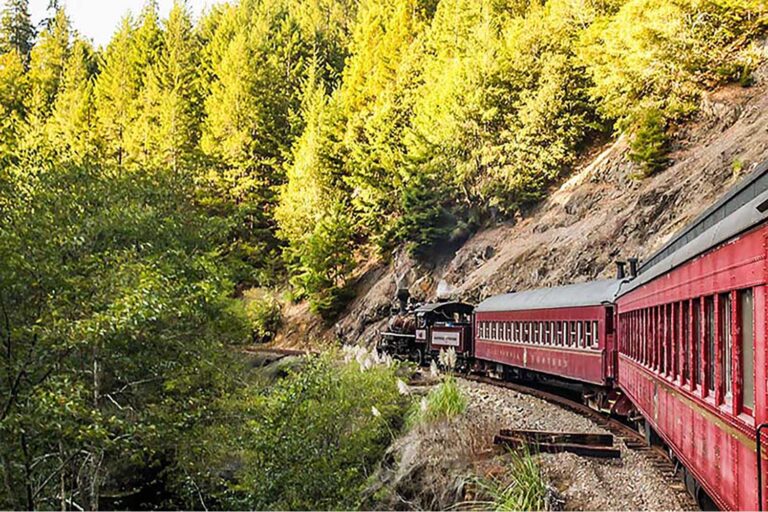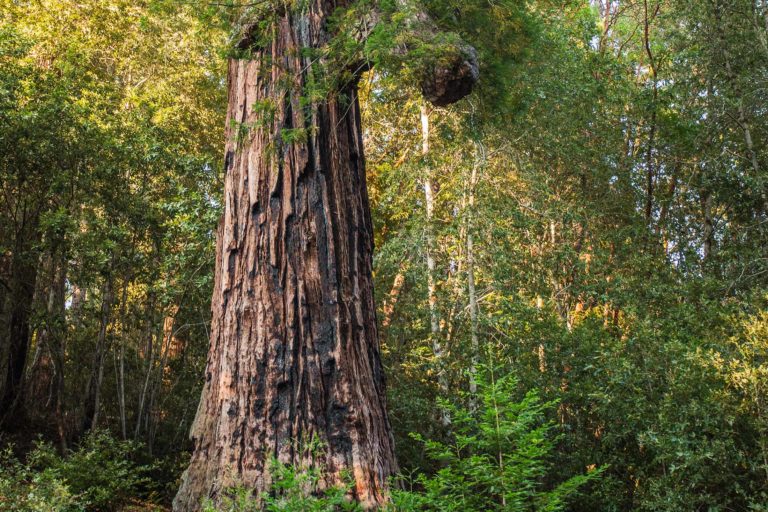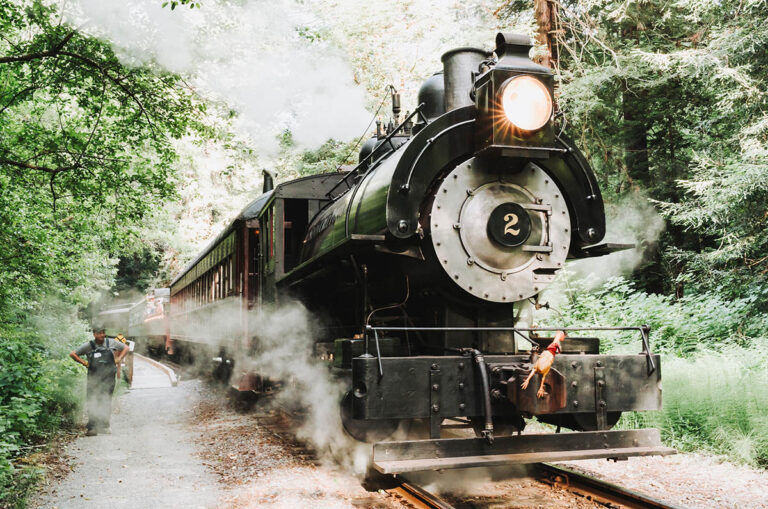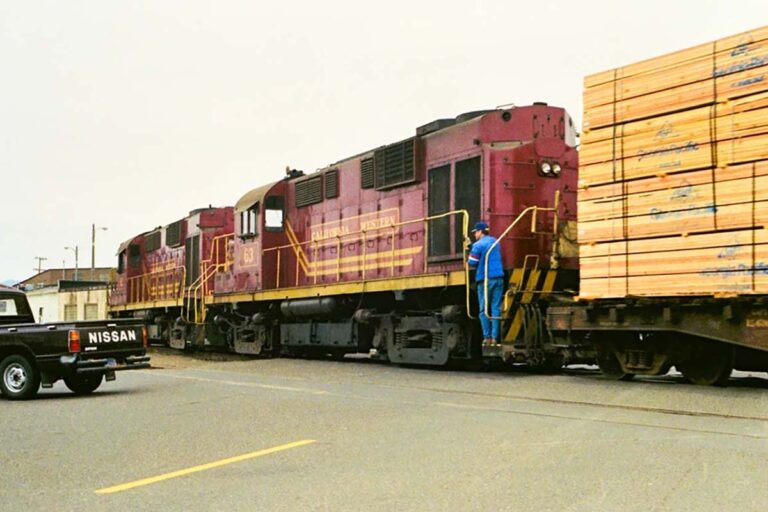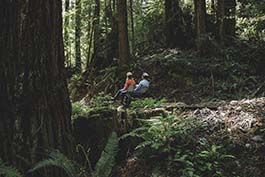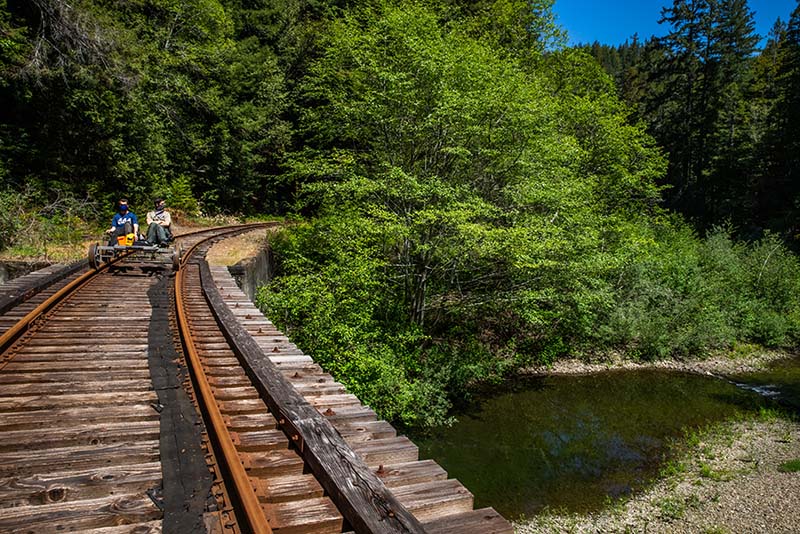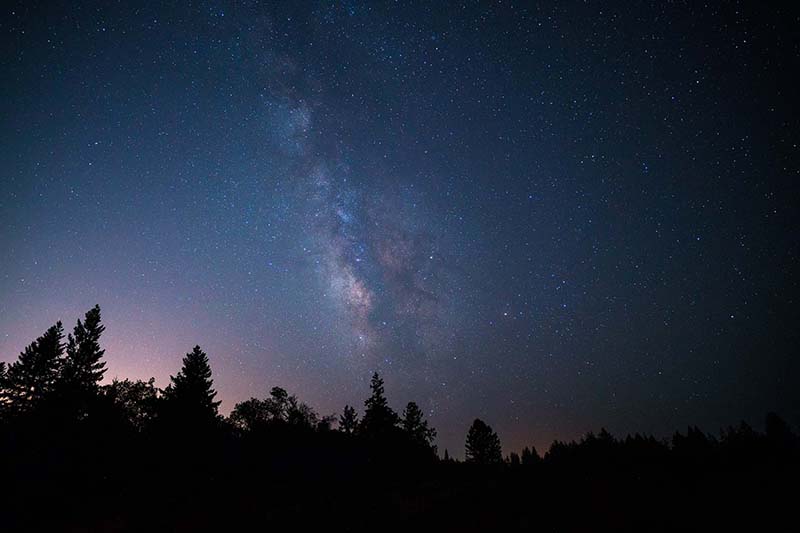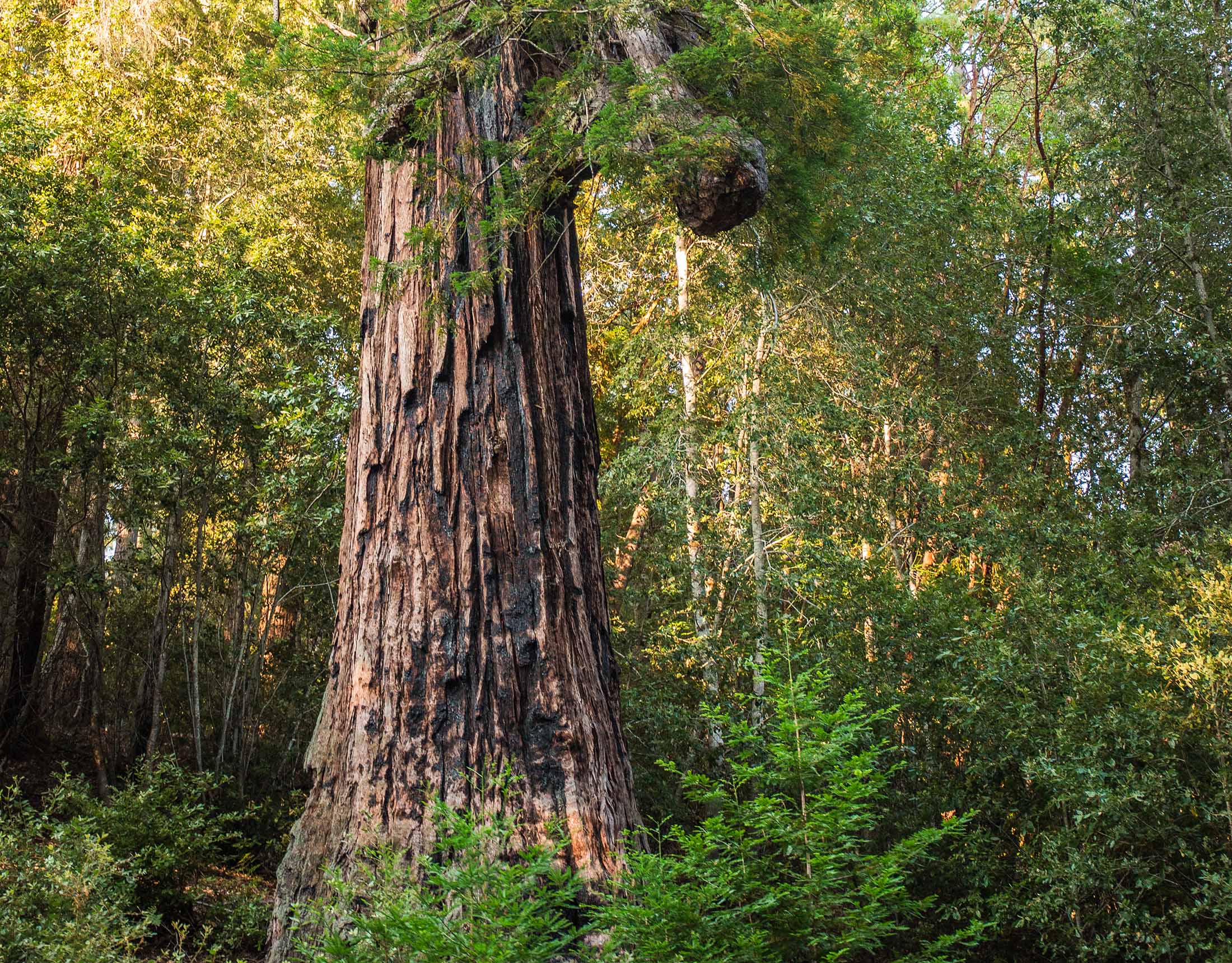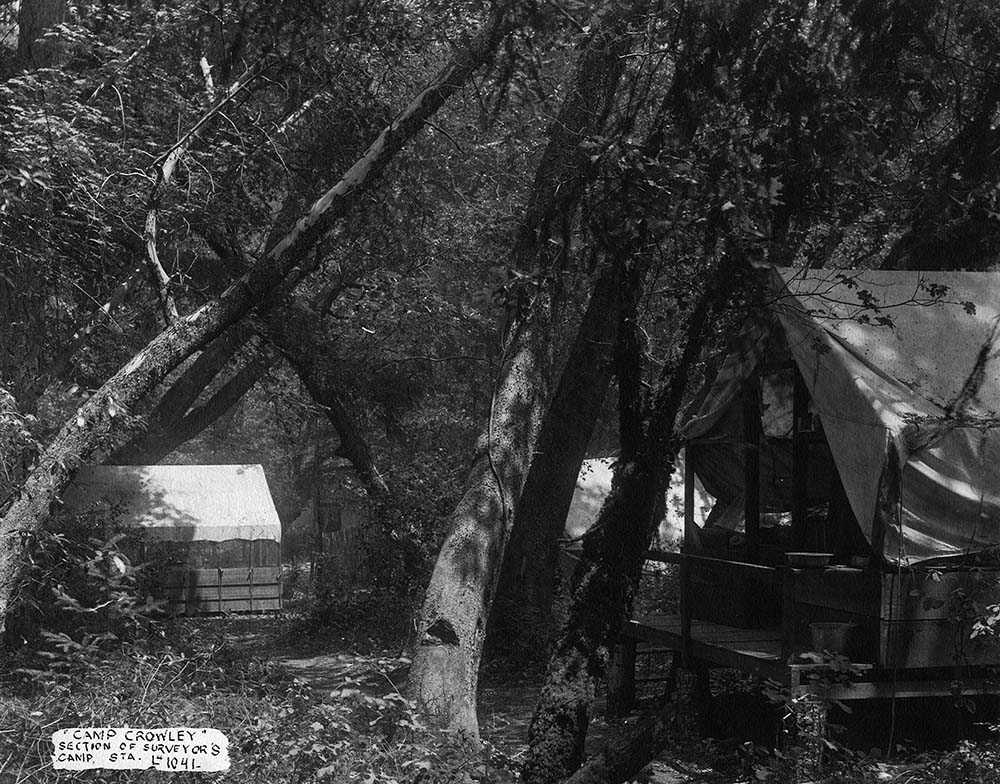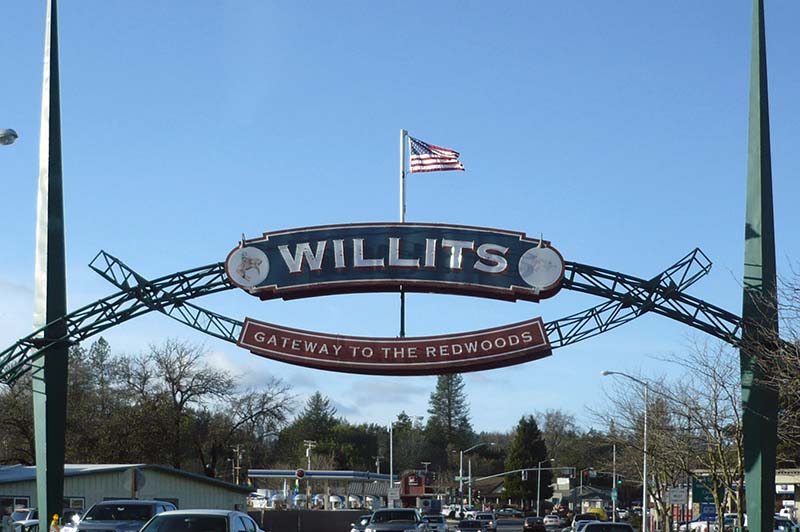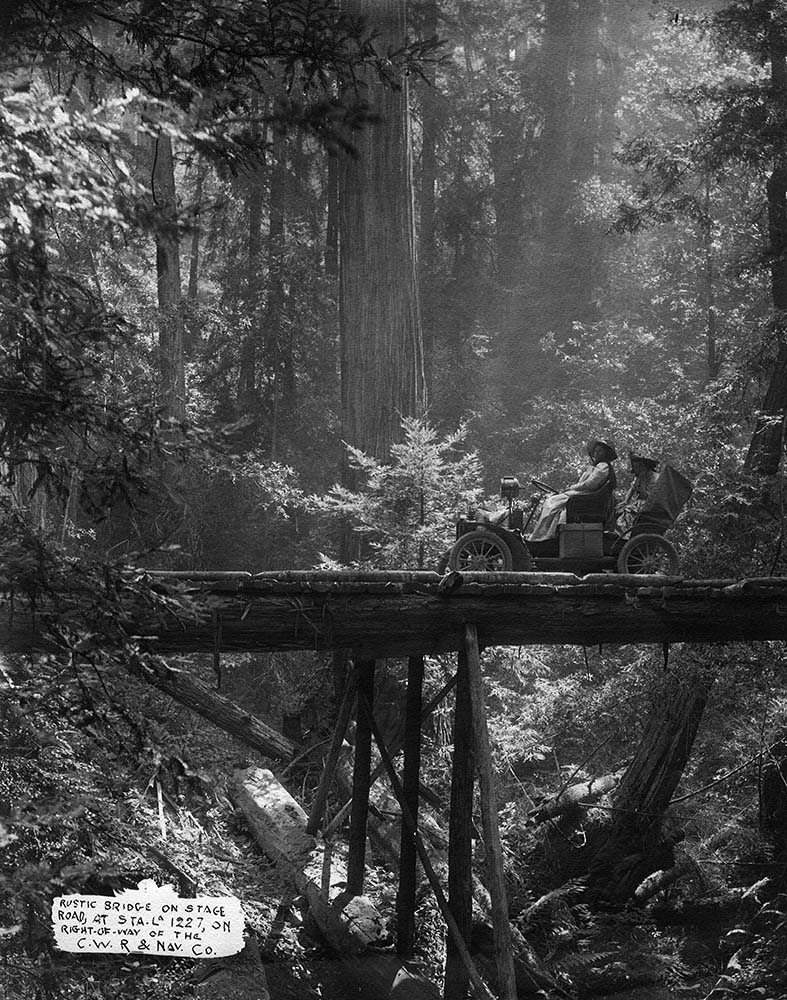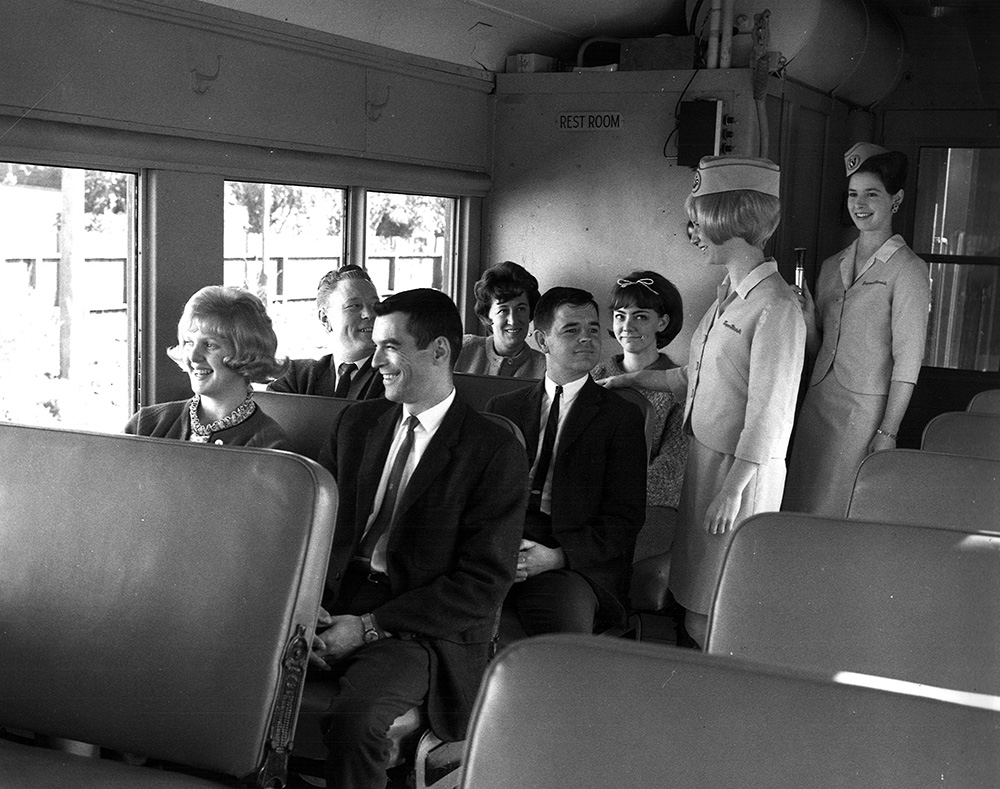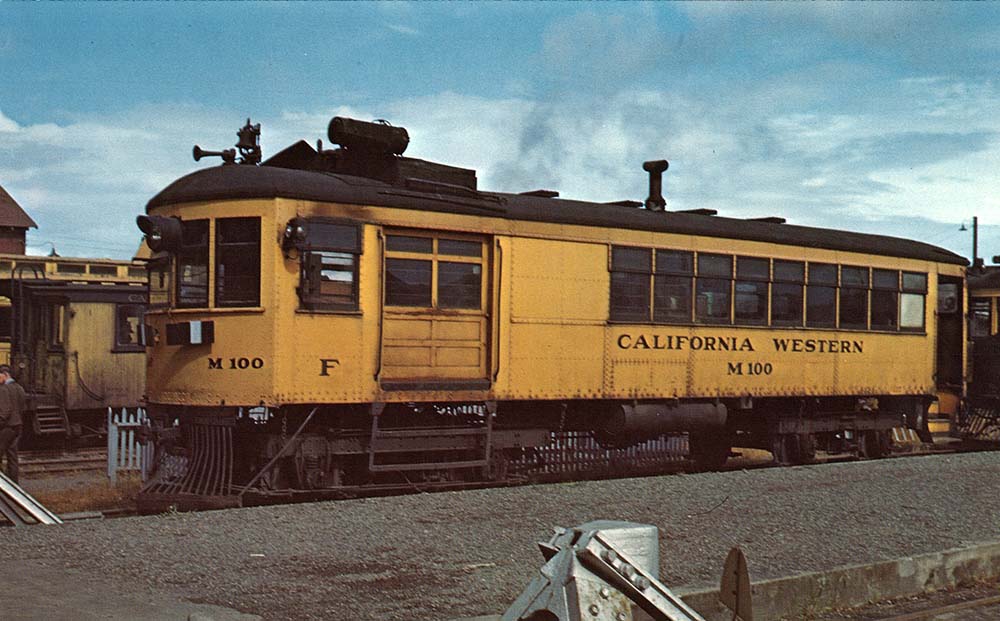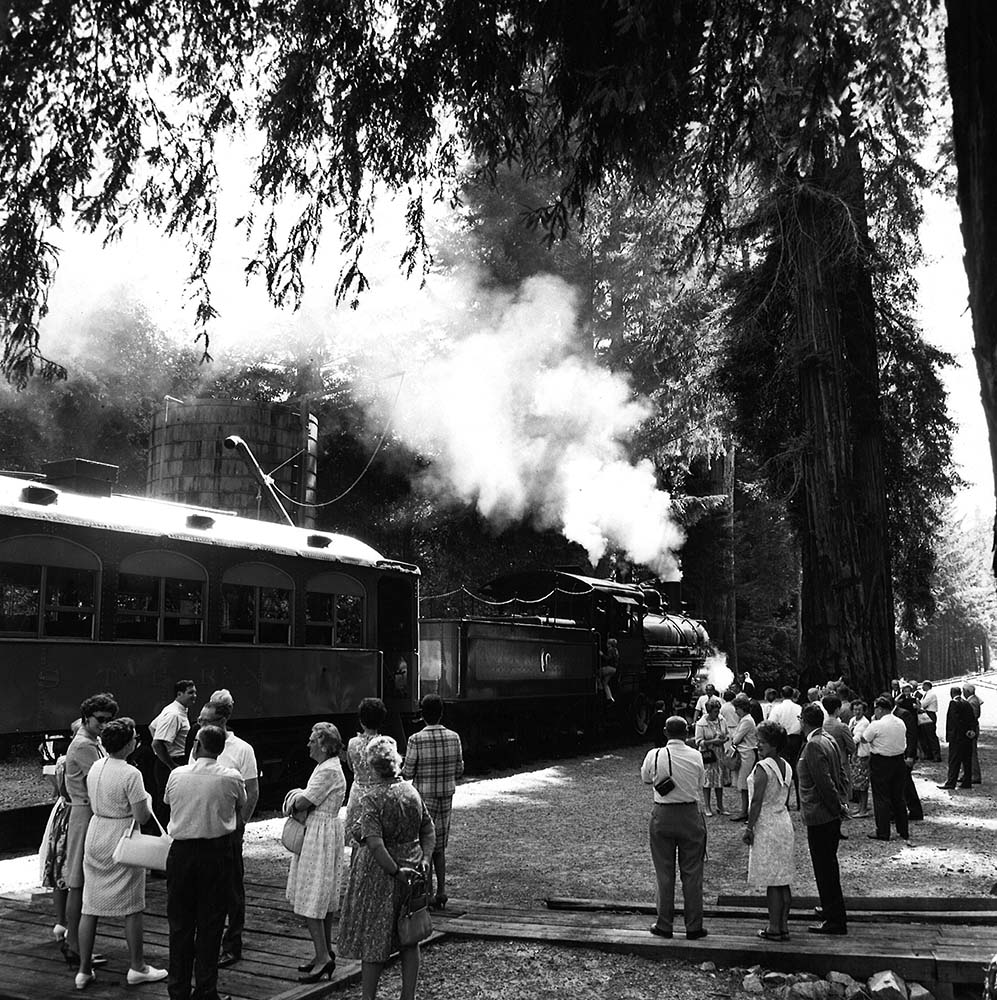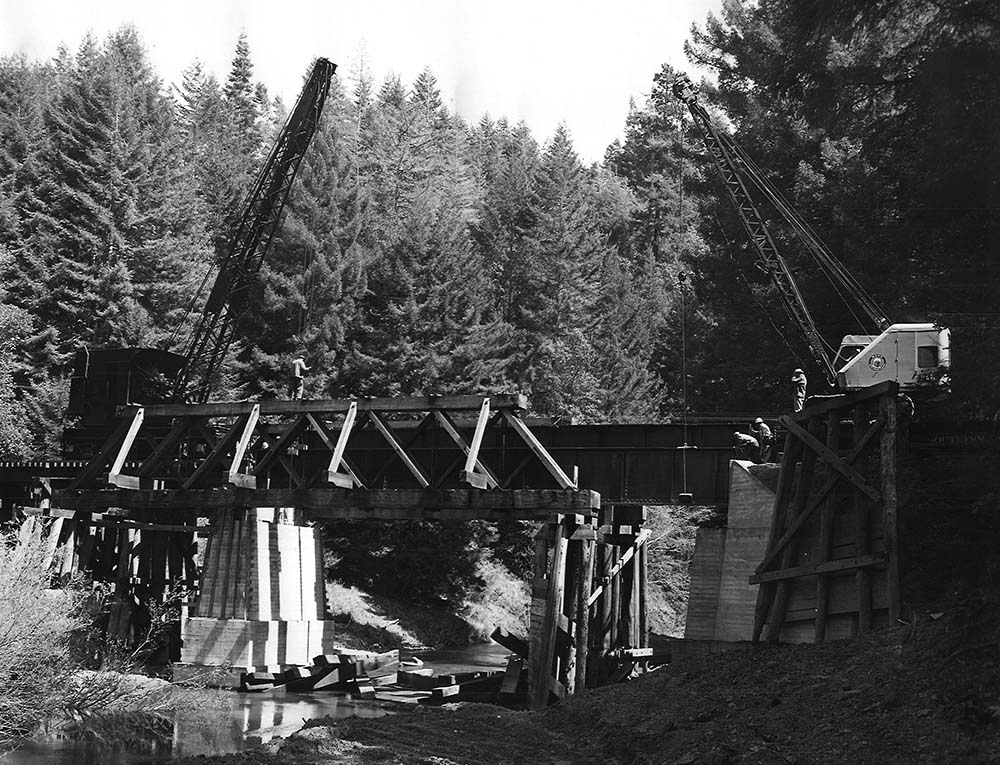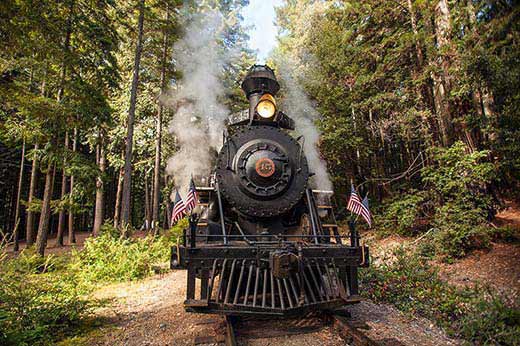Steam Locomotive #45
Was built in 1924 by the Baldwin Locomotive Works for the Brown-Lee Lumber Company in Medford, Oregon. #45 came to work at the Skunk Train in 1964 & has been in operation with us ever since.
Steam locomotives are classified by their wheel arrangements in numbers of wheels, in this case 2-8-2. #45 has 2 pilot wheels, 8 driving wheels, then 2 more trailing wheels under the cab, therefore, the classification of 2-8-2.
2-8-2 is often referred to as “Mikado”. In 1897 the Baldwin Locomotive Works were commissioned to build many 2-8-2 locomotives for a Japanese Railway. In 19th Century Japan, the Emperor was often referred to as “Mikado” which is an old-fashioned name for “Emperor of Japan”. #45 was always designed to burn oil for fuel. Originally designed to burn “bunker c” oil, which is a thick slurry of oil that had to be pre-heated to thin it enough to be fired. Today, #45 burns recycled motor oil. #45 operates with a boiler pressure of 170psi, weighs 118 tons, & has a tractive effort of 30,000-foot-pounds.
